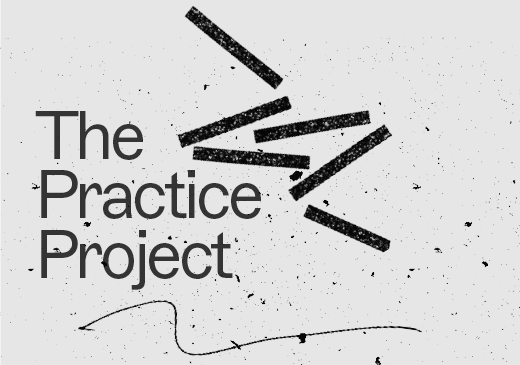Introduction
Since 2000, the importance of musicians’ body movements during practice and performance has been the focus of a fair amount of academic research. We know that many musicians tend to make (often exaggerated) postural movements - e.g. with their torsos and heads - while playing. But we have never properly understood why. Are these sorts of physical movements essential for good musicianship? Do they improve the quality of the sound that a musician produces?
In this blog, we explore the paper 'Cellists' sound quality is shaped by their primary postural behavior', published by Jocelyn Rozé et al. in 2020. The authors examined how posture impacts musical expression and sound quality, and their findings provide actionable advice for musicians, music teachers and students to enhance their playing while also looking after their physical health.
The Importance of Good Posture in Music
Good posture is vital, not only for musicians' physical health, but also for achieving exceptional musicality, including rich timbre. It is well documented that poor posture can lead to muscular and/or skeletal problems, particularly in string players. But the link between posture and sound quality is not as well researched or understood.
The study by Rozé et al. involved seven skilled cellists who performed a piece of music with optimal musical expression but while subject to different levels of physical restraint. Specifically, the participating cellists were prevented from moving their heads and chests by a harness and/or a neck collar.
The movement analysis undertaken as part of the research study showed that:
- two primary postural mechanisms are involved in the sound quality produced by cellists - one mechanism that controls bowing velocity and another that controls bowing acceleration;
- the bow velocity and bow acceleration of the cellists were both insufficient when they were physically constrained, which had a direct impact on sound quality; and
- freedom of head movement is particularly important to balance the twisting of the chest and the rotation of the right arm that occurs when a cellist is bowing and, specifically, seeking to change the velocity and acceleration of the bow.
These results are consistent with the known physics of the cello and previous acoustic studies of the cello (and other string instruments) using bowing machines.
Some of the cellists participating in the study also reported becoming more aware of their breathing when their physical movement was impaired. The authors of the study believed this was because usually their respiratory control - and also their postural control - were naturally piloted by an external focus i.e. the quality of the sounds they are producing. But the physical constraints instead forced the cellists to adopt an internal focus and to compensate by having more conscious control of their movement and breathing. So the study concluded that, by encouraging performers to focus on the results of their physical actions, rather than on the actions themselves, their motor systems can be trained in a more embodied and self-organized way, which in turn leads to more natural and efficient musical performance.
Practical Implications for Musicians and Teachers
To summarise, the study by Rozé and her team revealed the following:
- Freedom of head movement is essential for optimum musical expression as it balances chest torsion with arm rotation.
- Notes requiring large bowing movements were negatively affected by movement restrictions, leading to low timbral quality.
- Focusing on the musical outcome, i.e. the sounds produced, rather than on the physical actions of playing, can contribute to better sound quality.
Based on these findings, musicians, music students and music teachers can take the following steps to not only improve their posture but also enhance musical expression and sound quality:
- Ensure that the head is free to move flexibly while playing your chosen instrument: this will help balance chest and arm movements, allowing for better musical expression and overall sound quality.
- Focus on outcomes not actions: concentrate on the sound produced by your physical actions (e.g. bowing), not on the actions themselves. Again, this can contribute to better musical expression and sound quality.
- Emphasise good posture from an early age: encouraging and emphasising good posture in students, from the very beginning of their musical journey, enhances both their musicality and their physical well-being.
Integrating Posture Awareness in Music Education
Rozé and her co-authors felt that, due to a combination of ingrained teaching habits, ignorance and misunderstandings, the importance of posture among musicians has traditionally been underestimated. As a result, they believe that some music educators still focus on the rapid acquisition of technical skills, without ever properly considering a musician’s posture and how that impacts on their relationship with their instrument, and the quality of their music.
In the opinion of Rozé et al., promoting postural awareness when teaching music offers several key advantages:
- Improved musicality: good posture enables all musicians to achieve better sound quality and higher levels of musical expression, whatever their standard and their chosen instrument might be.
- Better physical health: focusing on posture also helps prevent musculo-skeletal disorders, which can be debilitating - and potentially career-ending - for any musician.
- Holistic approach to music education: teaching students to be mindful of their posture, and its connection to musical outcomes, fosters a broader overall understanding of musical performance and how to improve as a musician.
Conclusion
Rozé et al. concluded that good posture plays a critical role in a musician’s sound quality, overall performance and physical well-being. Their findings suggest that all musicians, music students and teachers should actively incorporate posture awareness into their practice routines and lessons. By doing so, this research suggests they can enjoy the benefits of improved musical expression and sound quality, while at the same time protecting their long-term physical health.
